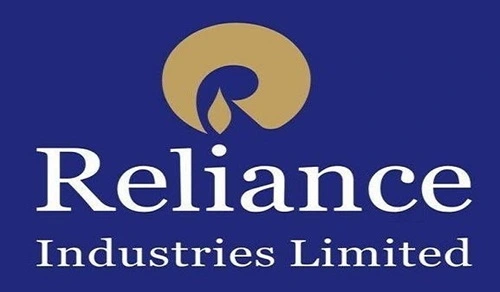Reliance Industries Limited (RIL) is more than just a conglomerate—it is the embodiment of India’s industrial transformation. From its humble textile roots in the late 1970s under visionary Dhirubhai Ambani to its current stature as a global energy, retail, and digital powerhouse under Mukesh Ambani, RIL has redefined the boundaries of what’s possible in Indian enterprise.
As of mid-2025, Reliance Industries commands a market capitalization exceeding ₹19 lakh crore, making it the most valuable Indian company. Its influence spans energy, petrochemicals, digital services (Jio), retail (Reliance Retail), green energy, media, and even genomics. What sets Reliance apart is its ability to constantly reinvent itself—whether it’s disrupting telecom with Jio, reshaping consumer retail, or now leading India’s green energy revolution.
Let’s dive into a comprehensive SWOT analysis—exploring Reliance’s Strengths, Weaknesses, Opportunities, and Threats—to understand how this Indian giant is positioned for the future.

Strengths: The Pillars of Reliance’s Dominance
1. Diversified Conglomerate with Market Leadership
RIL operates in high-growth and high-impact sectors: petrochemicals, oil & gas, telecom, retail, digital platforms, and renewable energy. Each segment—Jio in telecom, Reliance Retail in consumer goods, and RIL’s energy verticals—commands leadership or top-three market share in its category.
2. Strong Financial Position
Reliance’s consolidated revenue crossed ₹10.8 lakh crore in FY 2024–25, with healthy EBITDA margins and strong free cash flow. After its debt-reduction strategy in 2020–22, RIL continues to maintain a robust balance sheet, enabling aggressive investments in new ventures.
3. Digital and Telecom Prowess via Jio Platforms
Reliance Jio, with over 500 million subscribers, remains India’s largest telecom operator in 2025. Jio’s 5G rollout, integration of AI services, and affordable smartphone ecosystem have positioned it as a key enabler of India’s digital economy.
4. Retail Behemoth with Pan-India Reach
Reliance Retail operates over 20,000 stores across categories—grocery (JioMart), fashion (Trends), electronics (Reliance Digital), and pharmacy (Netmeds). It is the largest retailer in India and among the top retailers globally by revenue.
5. Visionary Leadership and Strategic Acquisitions
Under Mukesh Ambani’s leadership, RIL has consistently bet early on growth engines—whether it’s shale gas in the 2000s, telecom in 2016, or green energy in 2021. Recent acquisitions in AI, logistics, and e-commerce startups have sharpened Reliance’s tech edge.
Weaknesses: Challenges Within the Empire
1. Over-diversification Risk
While diversification is a strength, it also creates complexity in governance and focus. Managing operations across oil, retail, digital, and green energy under one umbrella brings challenges in agility and operational clarity.
2. Legacy Dependence on Fossil Fuels
Despite its shift toward green energy, RIL still derives a large portion of its revenue and profits from petrochemicals and refining, making it vulnerable to crude oil volatility and ESG pressures.
3. Execution Risks in New Ventures
Reliance is entering new-age sectors like solar panel manufacturing, hydrogen fuel, AI, and biotech, which are capital-intensive and unfamiliar territories. Execution challenges and delays can affect projected returns.
4. Perception of Market Dominance
Reliance’s size and scale often draw scrutiny over monopolistic practices, particularly in telecom and retail. Regulatory concerns and public perception can impact its social license to operate.
Opportunities: Engines for Future Growth
1. Green Energy Transformation
With its ₹75,000 crore commitment to clean energy, Reliance is building Dhirubhai Ambani Green Energy Giga Complex in Gujarat. Its focus on solar energy, battery storage, green hydrogen, and fuel cells aims to make it a global green energy leader by 2030.
2. Digital Ecosystem and AI Integration
Through Jio Platforms, RIL is building an ecosystem integrating 5G, cloud services, AI-powered tools, vernacular apps, and IoT solutions. Strategic partnerships with Google and Microsoft enhance its edge in the AI-first economy.
3. E-commerce and Quick Commerce Expansion
Reliance is aggressively growing JioMart and hyperlocal delivery platforms like Dunzo (where it holds a major stake). With rising digital consumption, Reliance is poised to challenge Amazon and Flipkart in India’s retail-tech space.
4. Financial Services and Fintech
RIL has entered the digital payments and fintech sector through Jio Financial Services, offering BNPL (Buy Now Pay Later), mutual funds, and digital wallets. With its vast customer base, it can revolutionize financial inclusion.
5. Global Expansion and Exports
As India becomes a manufacturing and export hub, Reliance is positioned to grow its global petrochemical, textiles, and green energy exports, especially to Africa, the Middle East, and Southeast Asia.
Threats: External Headwinds in a Complex Landscape
1. Geopolitical and Regulatory Risks
With global supply chain disruptions, energy price volatility, and tighter ESG regulations, RIL faces operational risks—especially in its hydrocarbons and export businesses.
2. Rising Competition in Telecom and Retail
Airtel’s 5G expansion, Adani’s entry into digital infrastructure, and the growing presence of Tata Neu, Amazon, and Flipkart in retail pose stiff competition to Jio and Reliance Retail.
3. Technology Obsolescence
In fast-evolving sectors like telecom, AI, and renewable tech, staying ahead of the curve is vital. Failure to adapt rapidly can result in technological redundancy and revenue erosion.
4. Economic Slowdowns and Consumption Pressure
Macroeconomic headwinds like inflation, interest rate hikes, and job market fluctuations can reduce consumer discretionary spending, especially in retail and lifestyle segments.
Conclusion: Reliance – India’s Growth Engine for the Next Decade
In 2025, Reliance Industries represents the spirit of a self-reliant, tech-forward, and sustainable India. Its bold pivot from fossil fuels to green energy, its mission to digitally empower every Indian household, and its unmatched scale make it a company that is not only leading industry—but shaping the future.
As a SWOT analyst and content creator based in India, it’s clear that Reliance is not just keeping pace with global innovation—it is setting the pace. With calculated risks, powerful execution, and visionary strategy, Reliance Industries is well-positioned to drive India’s socio-economic transformation for years to come.

Meet Suhas Harshe, a financial advisor committed to assisting people and businesses in confidently understanding and managing the complexities of the financial world. Suhas has shared his knowledge on various topics like business, investment strategies, optimizing taxes, and promoting financial well-being through articles in InvestmentDose.com


